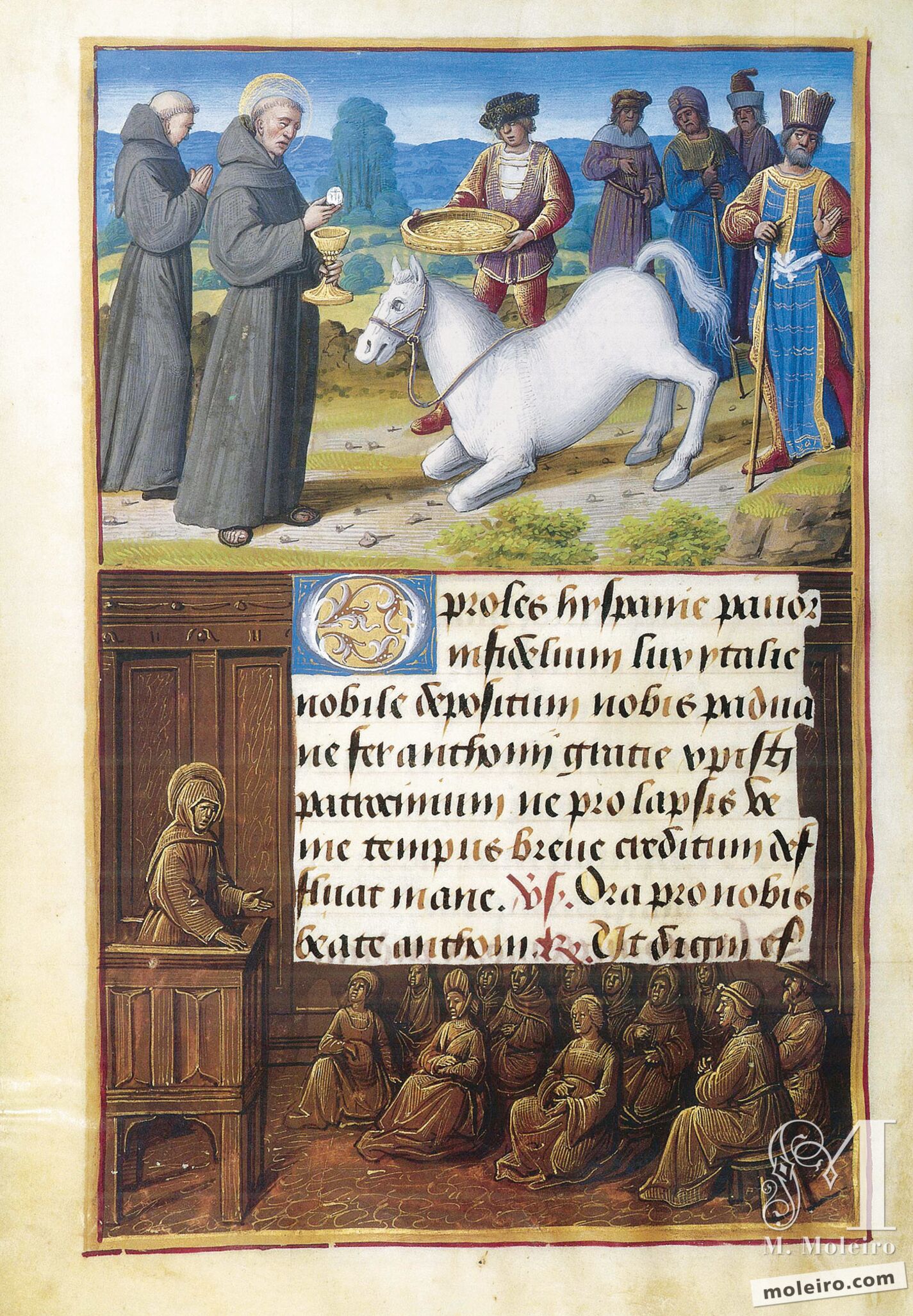In the miniature, Poyer illustrates the saint’s most popular legend. A Jew challenged Anthony to prove the real presence of Christ in the Eucharist. He would be convinced, said the Jew, if a horse (or, in other versions of the story, a mule) would pass up a meal of oats for the consecrated Host. In the miniature, the horse not only ignores his feed, but he also kneels down before the host that Anthony holds over a chalice. The Jew, identifiable at the right in his exotic gown and headgear, looks on in astonishment. In the border, Anthony is shown preaching to a rapt crowd. The saint died in Padua, where a basilica dedicated to him still enshrines his tomb and his relics -- including his tongue, instrument of his eloquence. He was declared a Doctor of the Church in 1946. (Feast day: June 13).
Roger S. Wieck.
Curator, Medieval and Renaissance Manuscripts
The Morgan Library & Museum

In the miniature, Poyer illustrates the saint’s most popular legend. A Jew challenged Anthony to prove the real presence of Christ in the Eucharist. He would be convinced, said the Jew, if a horse (or, in other versions of the story, a mule) would pass up a meal of oats for the consecrated Host. In the miniature, the horse not only ignores his feed, but he also kneels down before the host that Anthony holds over a chalice. The Jew, identifiable at the right in his exotic gown and headgear, looks on in astonishment. In the border, Anthony is shown preaching to a rapt crowd. The saint died in Padua, where a basilica dedicated to him still enshrines his tomb and his relics -- including his tongue, instrument of his eloquence. He was declared a Doctor of the Church in 1946. (Feast day: June 13).
Roger S. Wieck.
Curator, Medieval and Renaissance Manuscripts
The Morgan Library & Museum